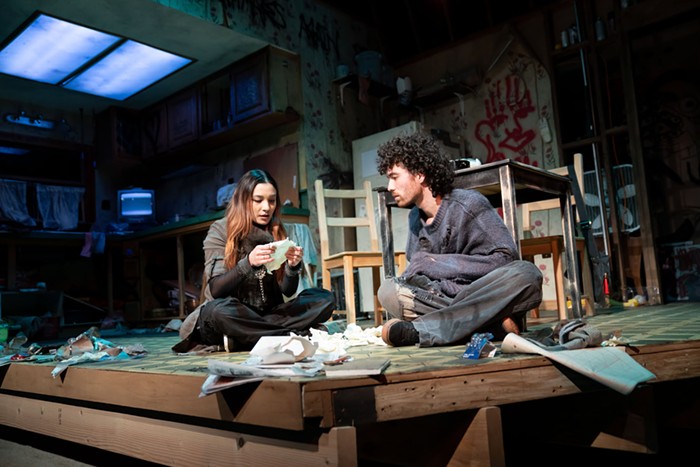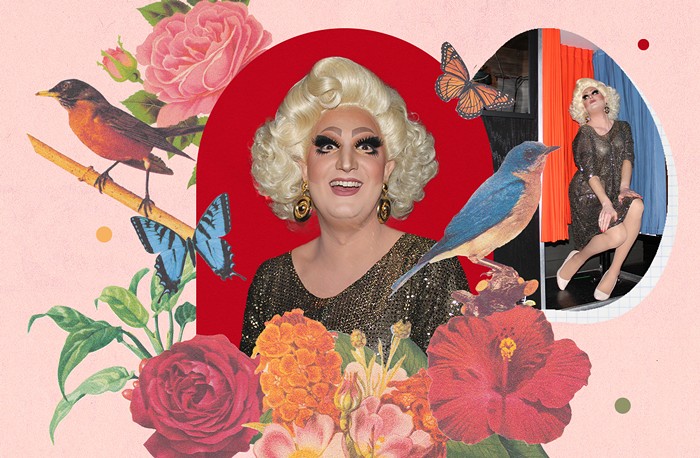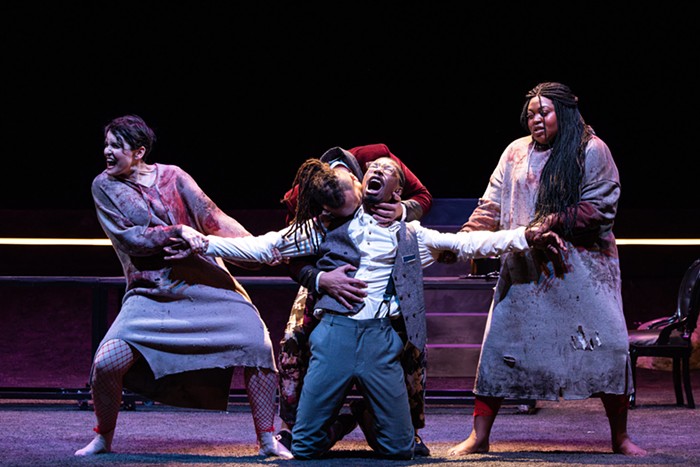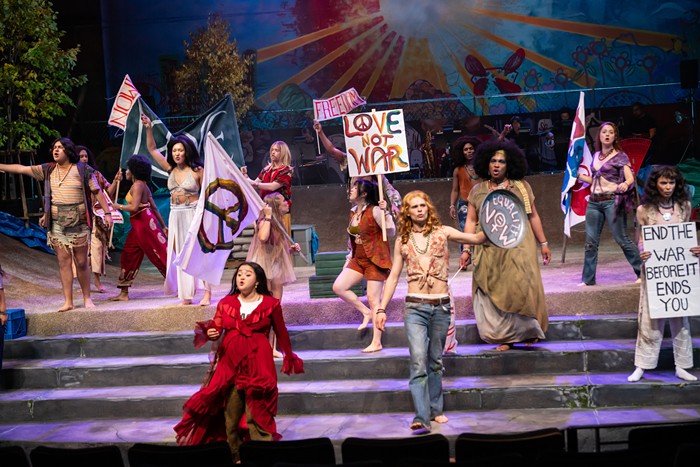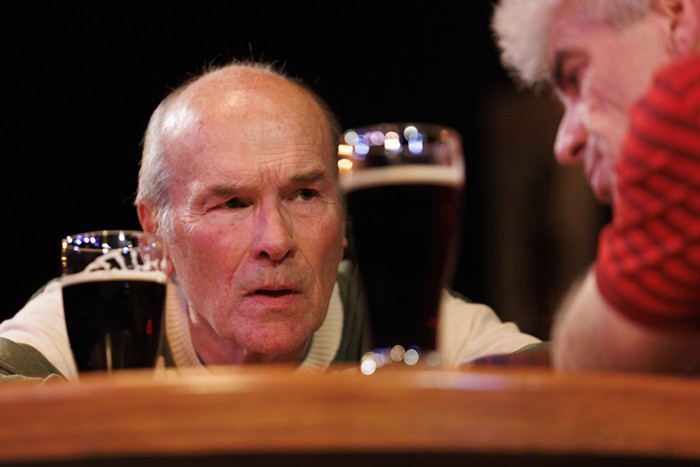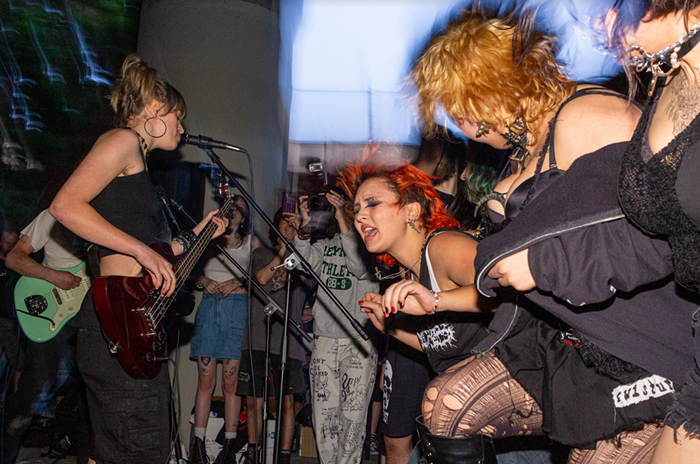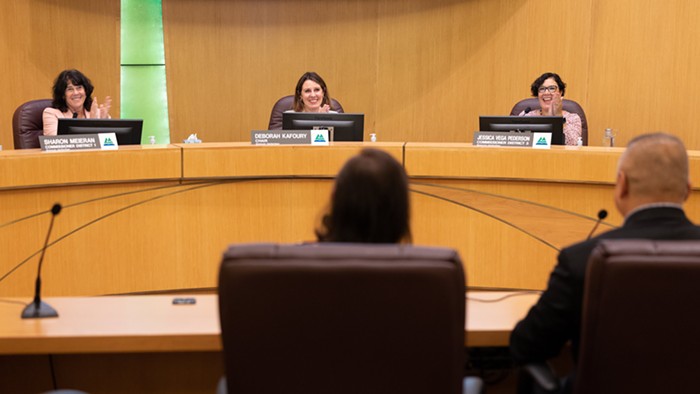
Searching for a way to connect choreographer Miguel Gutierrez’s performance This Bridge Called My Ass to the book from whence it takes its name This Bridge Called My Back, I found myself returning to a poem in the collection by Donna Kate Rushin, “The Bridge Poem." "I've had enough," Rushin declares, "I'm sick of seeing and touching / Both sides of things / Sick of being the damn bridge for everybody." This Bridge Called My Back was a groundbreaking 1981 anthology by women of color, critiquing white feminism. Both the anthology and Gutierrez’s work clearly express frustration. Gutierrez uses the language of theatrical dance to convey the anthology’s ethos with light, sound, body, fabric, stools, electric power strips, clamps, and Mac laptops. It’s a challenging work—two people walked out of the performance I attended—but if you give it a chance, My Ass has a lot to say about the weariness of building impermanent connections, borders, and boundaries.
Performers Alvaro Gonzalez, John Gutierrez, Xandra Ibarra, nibia pastrana santiago, and Evelyn Sanchez Narvaez open the presentation by chanting in Spanish. They're all clad in varied day-glo negligees. They alternate between stripping down—some changing into new garments—and dragging objects across PICA’s theater stage. With six bodies to focus on, its up to the viewer to prioritize order of observation. The dance is frenetic and the dancers are never dull—whether they're dragging fabric with their feet, climbing through step ladders, slapping themselves, or humping speakers playing a mix of atonal noise, folk, and Pitbull. What matters is how you interpret these happenings—and in my case, I saw the laborious decontextualizing of how we understand the body’s interactions with objects and other bodies.

My Ass contains moments where nude bodies interact in ways that are normally coded as sexual (like rubbing bearded faces on asses), but on the stage they lack eroticism. The forms of nude brown bodies and multicolored fabric is reminiscent of queer LA photographer Rakeem Cunningham’s work. As the lighting cues switch from blue-white tones to bright lights to seconds of total darkness, the audience sees Miguel Gutierrez and his fellow performers work in vain to form new connections between their bodies and cloth strung from the ceiling. Like the speaker in Rushin’s poem, Miguel and the other dancers are constantly at work: forming communicative labors, sick of seeing and touching, but unable to stop.

Not even death marks the end of My Ass. In the last third of the show, the performers restore the stage by laying out the wrinkle-free fabrics like a politically-colored map and taking on lines that sounds like telenovela dialogue. As the audience is deprived of context, it’s hard to know what’s going on. Earlier the the audience laughed at scenes that didn’t seem humorous. This final scene seems like the most appropriate place for laughter. Every character dies by gun violence as they profess the undying connection of eternal love. A dog made of industrial clamps is slowly dragged across the stage as an esoteric, humorous monologue plays.
Both My Back and Miguel Gutierrez's My Ass are immersive works, rich with meaning that will likely resonate deeply with viewers who aren’t traditionally represented in the world—not just literary and performance communities. While there's an undeniable absurdity throughout My Ass, it’s not a work of comedy. It makes us question how we’ve built the values that have gotten us to this point, and leaves the viewer almost as weary as the performers—but better for being so directly challenged.
We're all over this year's TBA! Keep up with us for reviews and critical impressions at: portlandmercury.com/tba

